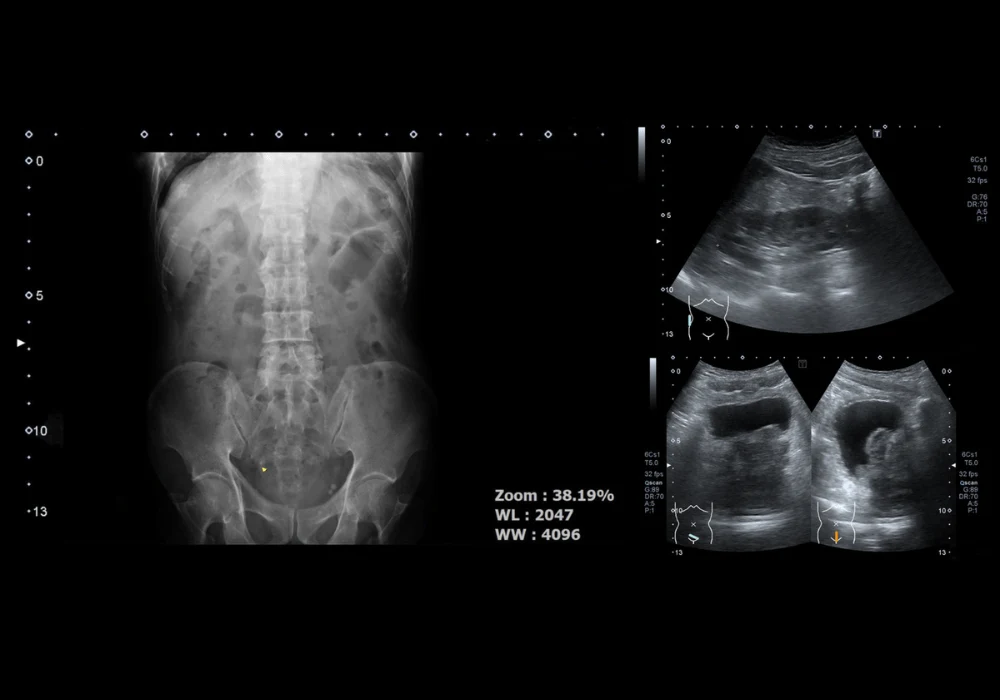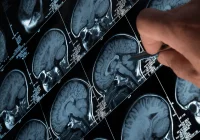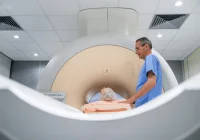Prostate cancer remains one of the most prevalent malignancies in men, necessitating advances in diagnostic imaging to enhance detection and treatment planning. Traditional imaging techniques, including multiparametric magnetic resonance imaging (mpMRI) and contrast-enhanced ultrasound (CEUS), provide insights into vascular structures within the prostate. However, these methods often lack the resolution to capture microvascular details essential for identifying cancerous regions accurately. Super-resolution ultrasound imaging (SRUI) emerges as a promising approach, utilising contrast-agent tracking to generate high-resolution vascular maps, potentially refining prostate cancer localisation and assessment. A recent review published in European Radiology Experimental explores the methodology, application and findings related to SRUI for mapping prostate microvascular patterns.
Development and Validation of SRUI for Prostate Imaging
The development of SRUI relies on algorithmic processing of CEUS video data to track microbubble contrast agents, effectively reconstructing vascular architecture at a microscopic level. Initially, tracking algorithms underwent validation using synthetic in silico data, followed by preclinical trials involving CEUS imaging of sheep ovarian tissue, which provided a dense microvascular structure analogous to tumour environments. The transition to human prostate imaging involved retrospective analysis of CEUS data from 14 patients, where 54 imaging planes were examined and suspected cancer regions were identified through biopsy correlation.
More to Read: Optimising Prostate Cancer Diagnosis with MRI-Based Risk Stratification
Among the tested tracking algorithms, a vascular model-based approach proved most robust in accurately mapping prostate vascular structures. The study confirmed that prostate cancerous regions exhibited distinct vascular characteristics, such as increased blood flow volume and speed, alongside regions of avascularity. In contrast, cancer-free prostate sections demonstrated more uniform and lower blood flow values, reinforcing the potential of SRUI as an advanced imaging tool.
Vascular Characteristics of Prostate Cancer Identified via SRUI
Super-resolution imaging revealed notable vascular differences between malignant and benign prostate tissue. Among the 10 imaging planes with confirmed Gleason 7 cancer, seven exhibited high-flow and high-volume vascular regions, while six demonstrated a combination of avascularity and increased blood flow. These distinct microvascular patterns suggest that SRUI can provide essential biomarkers for prostate cancer localisation.
One significant case study (P127) illustrated highly angiogenic cancer, where biopsy-confirmed cancer regions corresponded with areas of increased vascular density and velocity. Conversely, another case (P134) presented a nonangiogenic tumour with an avascular region surrounded by higher-flow areas, suggesting possible ischaemic or hypoxic tumour conditions. These findings highlight the variability in vascular presentations of prostate cancer and reinforce the need for further investigation into multiparametric SRUI biomarkers.
Implications for Prostate Cancer Diagnosis and Future Research
The integration of SRUI into prostate cancer imaging offers a pathway to enhanced diagnostic accuracy. Unlike conventional imaging techniques that rely on macroscopic assessments of perfusion, SRUI provides near-histological vascular mapping, potentially improving sensitivity and specificity. The identification of both angiogenic and nonangiogenic cancer types through SRUI underscores the necessity for further clinical trials to establish standardised diagnostic biomarkers.
Future research should focus on expanding clinical studies to include a broader patient cohort, refining tracking algorithms to enhance microbubble localisation and integrating SRUI with AI-assisted diagnostic tools. The potential for SRUI to complement or even serve as an alternative to mpMRI in prostate cancer detection warrants exploration, particularly in cases where MRI accessibility is limited or where lesions remain undetectable through standard imaging techniques.
Super-resolution ultrasound imaging represents a significant advancement in prostate cancer diagnostics by enabling high-resolution mapping of microvascular structures. The ability to distinguish vascular characteristics in malignant versus benign prostate tissue suggests its potential as a complementary or alternative imaging modality to mpMRI. Continued research and refinement of SRUI methodologies will be crucial in establishing its role in clinical practice, ultimately contributing to improved prostate cancer detection and management.
Source: European Radiology Experimental
Image Credit: iStock










